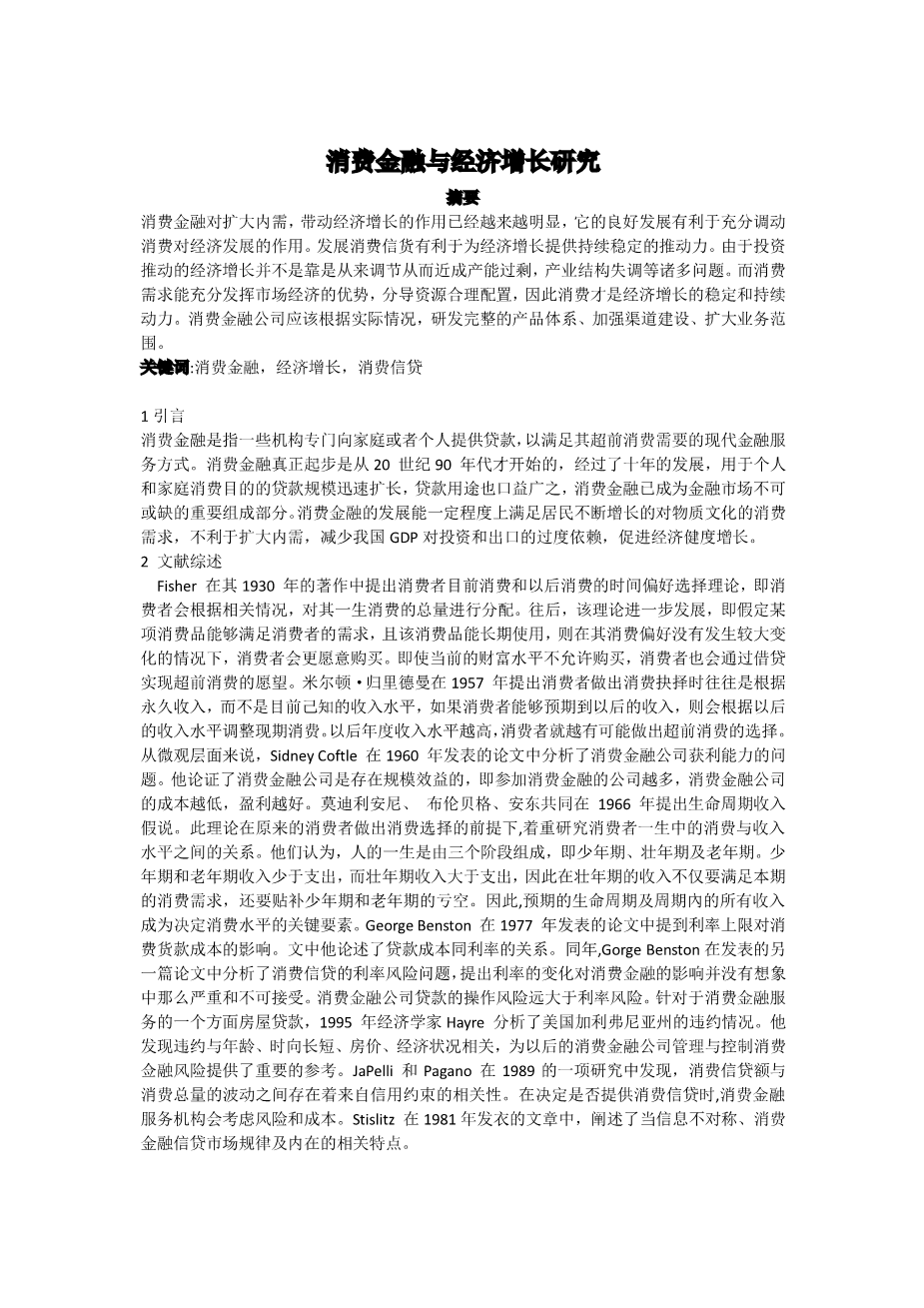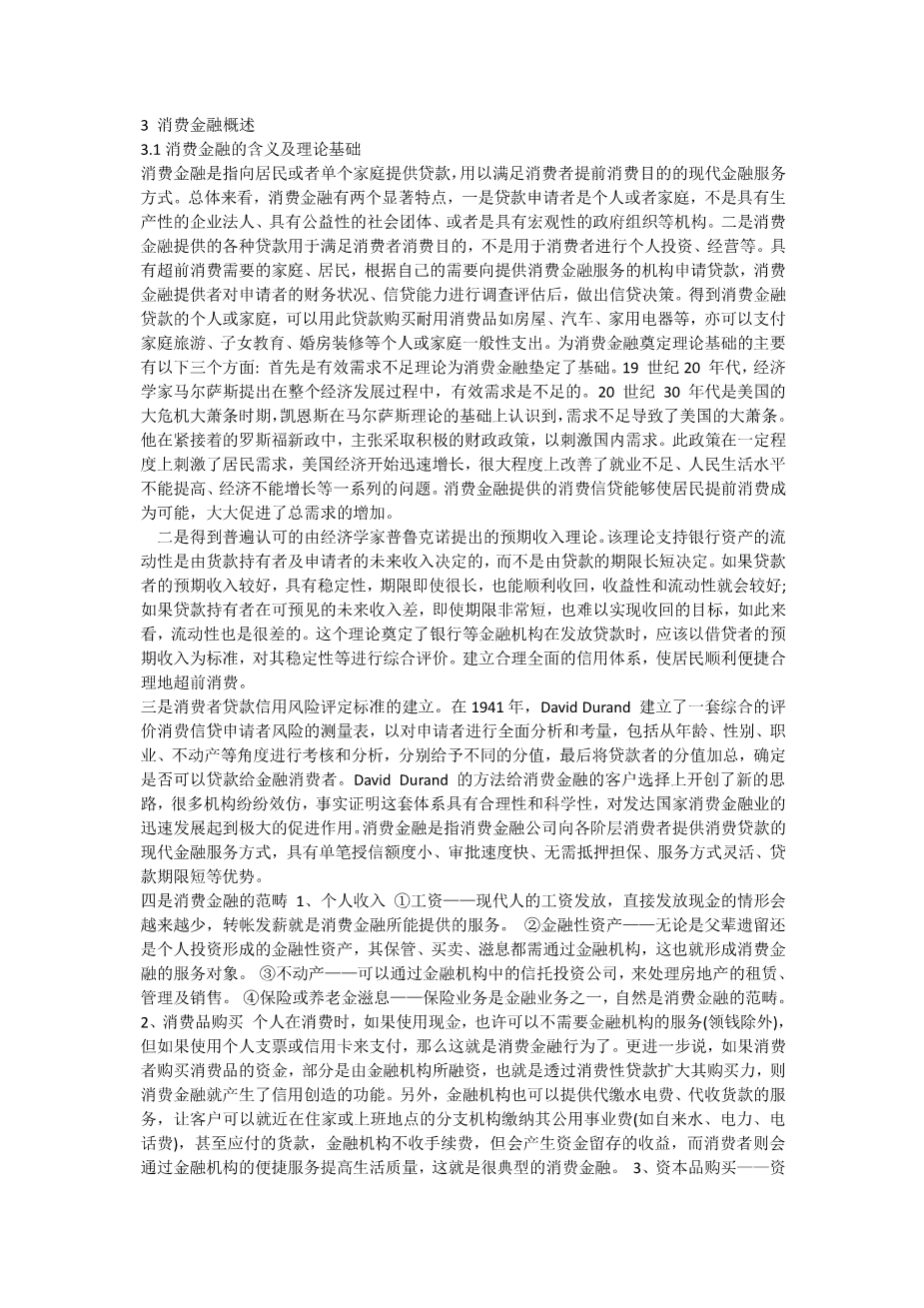The Research of consumer finance and economy growth
Abstract
The role of consumer finance in expanding domestic demand and stimulating economic growth has become increasingly evident.Its sound development is conducive to fully mobilizing the role of consumption in economic development. Thedevelopment of consumer credit is conducive to providing a sustained and stable driving force for economic growth.As investment-driven economic growth does not depend on the fact thatithas never been adjusted, there has been a lot of problems, suchas excess production capacity and imbalanced industrial structure.The consumer demand can give full play to the advantages of the market economy, and allocate resources in arational manner.Therefore, consumption is the stable and sustained driving force for economic growth. Consumer finance companies should research and develop a complete product system, strengthen channel construction, and expand business scope according to actual conditions.
Key words: consumer finance,economic growth, consumer credit.
1.Introduction
Consumer finance refers to the modern financial services that some institutions provide loans to households or individuals to meet their advanced consumption needs. The real start of consumer finance began in the 1990s. After ten years of development, the scale of loans for personal and family consumption purposes has expanded rapidly, and the use of loans has also been widely used. Consumer finance has become an indispensable part of the financial market. The development of consumer finance can, to a certain extent, satisfy residents' ever-increasing consumption demand for material culture, and it is not conducive to expanding domestic demand, reducing excessive dependence of China's GDP on investment and exports, and promoting healthy economic growth.
2.Journals reviewed
In his 1930 work, Fisher puts forward the theory of time preference for consumers' current consumption and later consumption, that is,consumers will allocate their total lifetime consumption according to the relevant circumstances. Later, the theory is further developed.It is assumed that a consumer product can satisfy the consumer's needs, and that the consumer product can be used for a long period of time. If the consumer preference does not change significantly, the consumer will be more willing to purchase.Even if the current level of wealth does not allow purchases, consumers will realize their desire to spend ahead of time through borrowing.In 1957,Milton Lederman proposed that consumers make consumption decisions according to permanent income rather than current known income levels. If consumers can expect future income, they will adjust current consumption according to future income levels. The higher the level of income in the future, the more likely consumers are to make choices in advance consumption. At the micro level, Sidney Coftle published a paper in 1960 that analyzed the problem of the profitability of consumer finance companies. He demonstrated that consumer finance companies have economies of scale, that is, the more companies that participate in consumer finance, the lower the cost of consumer finance companies and the better the profitability.Modigliani, Brunberg, and Anton jointly proposed a life cycle income hypothesis in 1966. This theory research the relationship between consumer spending and income levels in the lifetime of the consumer on the premise that the original consumer made the consumer choice. They believe that a person's life consists of three stages, namely, adolescence, prime and old age. The income of young and old age is less than expenditure, and the income of the prime period is more than expenditure. Therefore, the income during the prime period is not only to meet the current consumer demand, but also to compensate for the deficits in the young and old ages. Therefore, the expected life cycle and all income in the cycle become the key factors in determining the level of consumption. In a paper published in 1977, George Benston mentioned the impact of interest rate caps on the cost of consumer goods. In this paper he discusses the relationship between loan costs and interest rates. In the same year, Gorge Benston analyzed the interest rate risk problem of consumer credit in another paper published, and suggested that the impact of changes in interest rates on consumer finance was not as serious and unacceptable as it was supposed to be. The operational risk of a consumer finance company loan is much greater than the interest rate risk. In response to a home loan for consumer finance services, in 1995 the economist Hayre analyzed the state of California’s breach of contract. He found that breach of contract is related to age, duration, housing prices, and economic conditions, and provides an important reference for future consumer finance companies to manage and control consumption and financial risks. In a 1989 study, JaPelli and Pagano found that there was a correlation between consumer credit and total consumption volatility from credit constraints. When deciding whether to provide consumer credit, consumer financial services organizations will consider risks and costs.In 1981,Stislitz elaborated on information asymmetry, the rules of the consumer finance credit market, and the inherent related characteristics in his article.
- Consumer Finance Overview
3.1The meaning and theoretical basis of consumer finance
Consumer finance is a modern financial service that provides loans to residents or individual households to meet the purpose of advanced consumption by consumers. Overall, consumer finance has two notable features. First, the loan applicant is an individual or a family. It is not a productive enterprise legal person, a social organizat
剩余内容已隐藏,支付完成后下载完整资料


英语译文共 4 页,剩余内容已隐藏,支付完成后下载完整资料
资料编号:[477866],资料为PDF文档或Word文档,PDF文档可免费转换为Word
以上是毕业论文外文翻译,课题毕业论文、任务书、文献综述、开题报告、程序设计、图纸设计等资料可联系客服协助查找。


